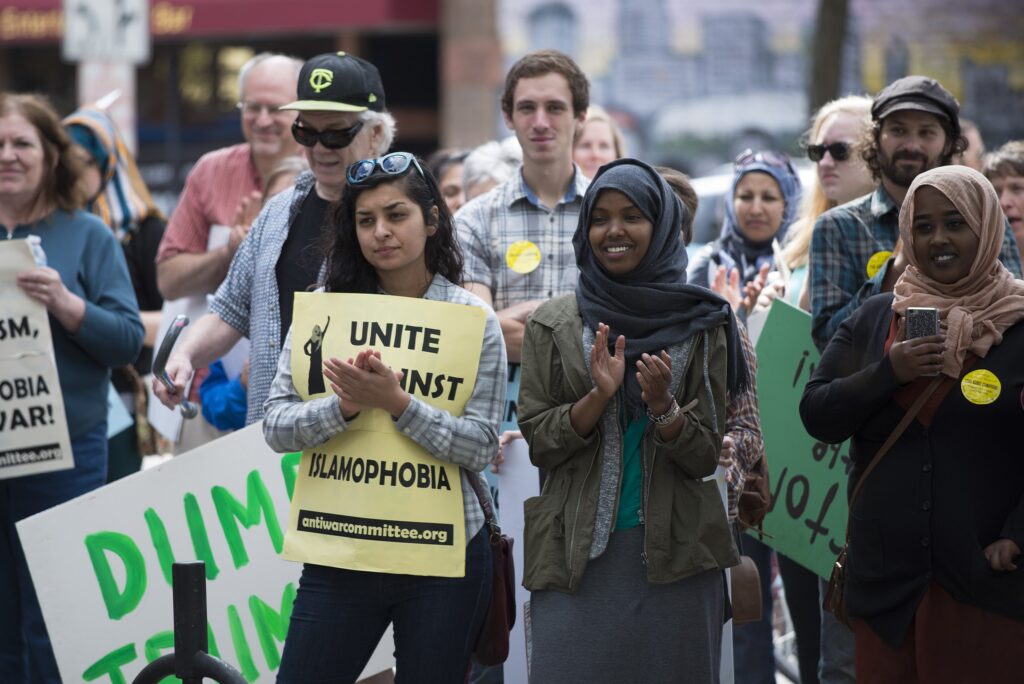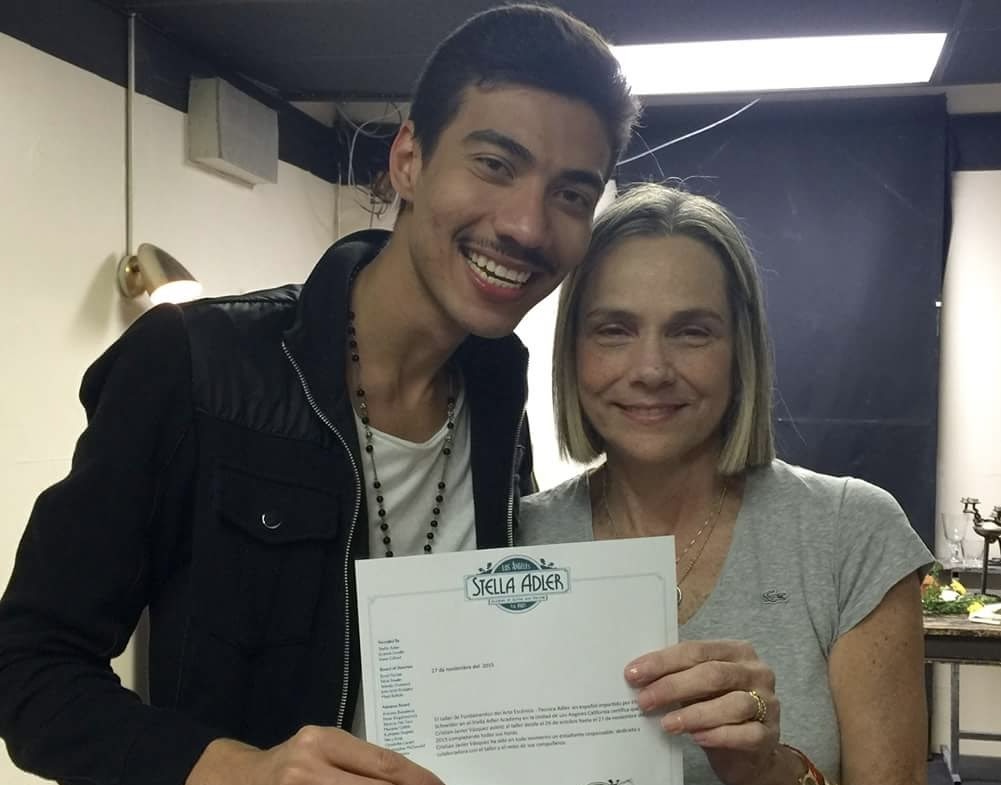(LOS ANGELES) — It lurks in the shadows of everyday interactions, from the offhand comments to the subtle glances that make us feel like outsiders in our own communities. As a Muslim, the sting of Islamophobia is all too familiar, from the “random” security checks at American airports to the flippant references to terrorism people have made about or directly toward me. But Islamophobia is not just a problem of overt discrimination. Islamophobia is fairly pervasive in many spaces that my fellow Muslims and I inhabit, whether offline or online. However, going beyond the seemingly obvious examples, defining the term can be tricky. It’s not just about individual actions, but also about the systemic biases and prejudices that underpin our society.
“If we don’t diagnose the problem correctly, we won’t respond effectively,” Todd H. Green, the executive director of America Indivisible, a nonpartisan, nonprofit organization dedicated to countering racism against Muslims and those perceived as Muslim, told me.
A recent controversy at Hamline University in Minnesota underscored the importance of defining Islamophobia in America. In autumn of 2022, Erika López Prater, an adjunct professor at Hamline University, showed a 14th-century painting depicting the Prophet Muhammad during her global art history class. She acknowledged during the class that many Muslims hold a religious belief prohibiting depictions of the prophet. She also warned students beforehand on her syllabus and in class that she would show the painting. Despite that, she lost her job. The university initially cited her showing the painting as Islamophobic before walking those remarks back.
Understanding and defining Islamophobia can be a challenging task, even for the average American. Due to the intricate nature of the issue and the many different forms it can take, it can be difficult to pinpoint exactly what constitutes Islamophobic behavior or rhetoric. To add to this complexity, Islamophobia is often intertwined with other forms of bigotry such as misogyny, xenophobia, and racism, making it all the more challenging to tease out its specific manifestations.
Green said that he defines Islamophobia as “the fear of and hostility toward Muslims and Islam that is rooted in racism, and that manifests itself in individual and systemic acts of exclusion, discrimination, and violence that target Muslims and those perceived as Muslim.” Elsadig Elsheikh, the director of the Global Justice Program at the University of California, Berkeley, defined it as “all acts of othering Muslims, whether done through political legislation or legal mechanisms, or a verbal or physical attack on the visibility of Muslims and Muslim subjects.” For instance, Islamophobic behavior might include discrimination against Muslims in the workplace or in the public sphere, as well as the spread of harmful stereotypes and misinformation about Islam and its followers.
Islamophobia remains pervasive
These definitions resonate with me as it captures the idea that Islamophobia is a form of exclusion that goes beyond individual incidents. Despite efforts to raise awareness of the persistence of Islamophobia by organizations such as America Indivisible and the Othering & Belonging Institute at Berkeley, unfortunately, the data suggests that prejudice and discrimination against Muslim Americans not only remain prevalent, but are on the rise.
For example, a landmark survey of Muslim Americans in 2021 by the Othering & Belonging Institute found that more than two-thirds of survey participants had personally experienced Islamophobia. The same survey found that over 95 percent of participants believe Islamophobia is a real problem in the United States.
The Institute for Social Policy and Understanding, a nonpartisan, nonprofit organization that provides research and education about American Muslims, found in a 2022 survey that Muslims were the most likely religious group in the United States to experience discrimination in various contexts, including employment, housing, and during interactions with law enforcement.
While studies of Muslim experiences with Islamophobia provide important insight, it is also crucial to examine broader societal attitudes toward Islam. Unfortunately, the prevalence of Islamophobia in American society persists, as evidenced by a 2021 survey conducted by the Pew Research Center. The survey found that half of Americans believe that Islam is more likely than other religions to encourage violence among its followers. This statistic is particularly concerning because it suggests that harmful stereotypes and misinformation about Islam continue to be pervasive, and that many Americans hold negative views of the religion and its followers. These attitudes can contribute to a range of negative outcomes, from discrimination against Muslims in various spheres of life to hate crimes and other forms of violence.
Why is it so persistent in the U.S.?
Instrumental to tackling Islamophobia, after having defined it, is understanding where it came from. America has a sordid history of finding a symbolic stand-in at home when it has an enemy abroad. “Think of the Japanese Americans interned during the Second World War,” Green told me. It was a war in which the United States was fighting the Japanese, and thus Japanese Americans became the domestic enemy. “The war abroad got translated into discrimination at home.” Fast forward to the aftermath of the attacks on September 11th, when America embarked on the “war on Terror” in Muslim-majority countries, namely the invasions of Iraq and Afghanistan. A byproduct of this, Green argued, was “crafting the image of Muslims as the enemy.”
According to experts like Green, Islamophobia is not solely a natural response to the events of 9/11, but is instead fueled by foreign policies that have a spillover effect on domestic policies. In other words, while the events of 9/11 may have initially sparked fear and suspicion toward Muslims, the persistence of Islamophobia over time is due in large part to ongoing policies and actions taken by governments both at home and abroad. These policies can include things like surveillance and policing of Muslim communities, travel restrictions or bans, and military interventions in majority-Muslim countries.
Not only that, but Elshiekh argued that America’s history of structural racism and racial hierarchies has always sought to find a scapegoat within society to divert attention from the shortcomings of political, economic, and social projects in the United States. By linking foreign and domestic policies in this way, experts suggest that addressing Islamophobia will require a multifaceted approach that addresses not only individual attitudes and beliefs, but also larger structural factors that contribute to its persistence.
In our conversation, Elsheikh stressed the psychological impact on Muslims that face Islamophobia. It affects how they perceive themselves and present themselves, as well as their behavior in public spaces. For example, some Muslims may feel pressure to downplay their religious identity in order to avoid discrimination or harassment, which can have negative psychological effects over time. They may also experience heightened levels of anxiety or fear in public spaces, such as airports or public transportation, where they may be subject to additional scrutiny or suspicion. These experiences can lead some Muslims to alter their behavior, such as avoiding certain places or situations, in order to mitigate the risk of discrimination or harassment. In this way, Islamophobia can shape not only how Muslims are treated by others, but also their own sense of self and place in society.
That really stuck with me, and I began considering whether I have, at least on a subconscious level, altered the way I present myself. For example, the byline for this piece reads Sami Vanderlip, not Sami Islam Vanderlip, which is my full name. Meanwhile, all my social media handles are @samiislam1505.
More crucially, though, I think of those that don’t have the same privilege as me to be able to reduce their Muslim visibility, namely Muslim women who frequently adorn a hijab or abaya in public. They are particularly affected by Islamophobic treatment because they are placed at the forefront of both Islamophobia and misogyny and therefore are forced to confront the negative consequences of both simultaneously. “As soon as you display that visibility, you become a threat, subject, and target,” Elsheikh said.
Media feeds the problem
A significant part of the persistence of Islamophobia lies with the mainstream media. Green said that most critical media studies show that the mainstream media has a problem with bias when covering Islam and Muslims. And yet most people’s perceptions of Muslims come from the media. MSNBC host and political journalist Mehdi Hasan told me that “Islamophobia has been driven by the media unfortunately, institutionally, both wittingly and unwittingly.”
One way in which the media has contributed to Islamophobia has been by selectively reporting on acts of terrorism committed by Muslims while ignoring similar acts committed by non-Muslims. For example, a 2019 study by the University of Alabama found that terrorist attacks committed by Muslims received 357% more U.S. press coverage than those committed by non-Muslims, leading to a skewed and inaccurate perception of the threat posed by Muslims. “Muslims have been depicted in our discourse as a threat, as foreign, as dangerous, in a way that we would never portray any other minority group in the same way,” Hasan added.
Despite this, there are reasons for optimism about the state of Islamophobia. Elsheikh expressed his pride in seeing “Muslim Americans speak with elegancy and with courage” in this fight. He believes that “only we can liberate ourselves.”
Speaking with Hasan got me wondering about my role as a journalist in this fight. As a journalist, I have a responsibility to accurately report on issues related to Islam and to actively combat harmful stereotypes and misinformation whenever I encounter them. This can include using language that accurately reflects the nature of Islamophobia, even if it may have been taboo in the past. As Green pointed out, progress has been made in recent years, saying that a decade ago, he “couldn’t pay a journalist to use the word ‘Islamophobia’ or ‘Islamophobic.’”
However, Green recognizes that using the word does not mean people fully understand it; therefore, the need to educate people on its meaning and implications remains. “There has been a shift, however. And so I’m hopeful,” Green added.
What gives other Muslim journalists like Hasan and me hope is the fact that, finally, the media is taking representation seriously. Take MSNBC, for example, where there are now three anchors of Muslim background on air, often in prime-time: Ayman Mohyeldin and Ali Velshi alongside Hasan.
Hasan told me a story of the time he was on prime-time on MSNBC interviewing Ilhan Omar, a Muslim member of Congress, about terrorism, not Muslim terrorism, but domestic far-right terrorism and how best to stop it.
“As someone who spent years growing up watching a TV landscape free of Muslim faces, watching a British Parliament and a U.S. Congress free of Muslim members, to sit on prime-time American television as a Muslim immigrant and talk about terrorism with another Muslim immigrant and it not be a story about Muslim terrorism, I think we’re making progress,” Hasan told me.
Between Green’s optimism and Hasan’s direct experience, as a Muslim, I am hopeful — hopeful that now there is a space for me as a Muslim journalist in the U.S. media to thrive, a space that wasn’t widely available to people like me ever before.


